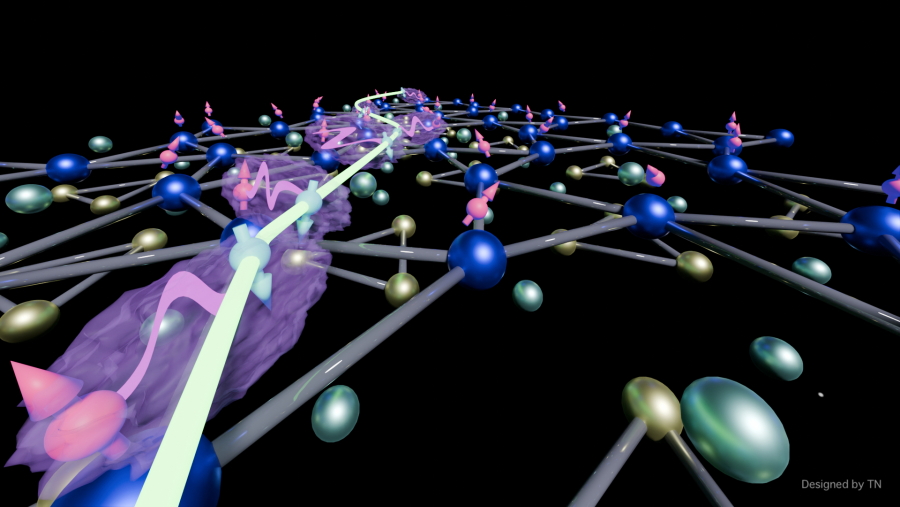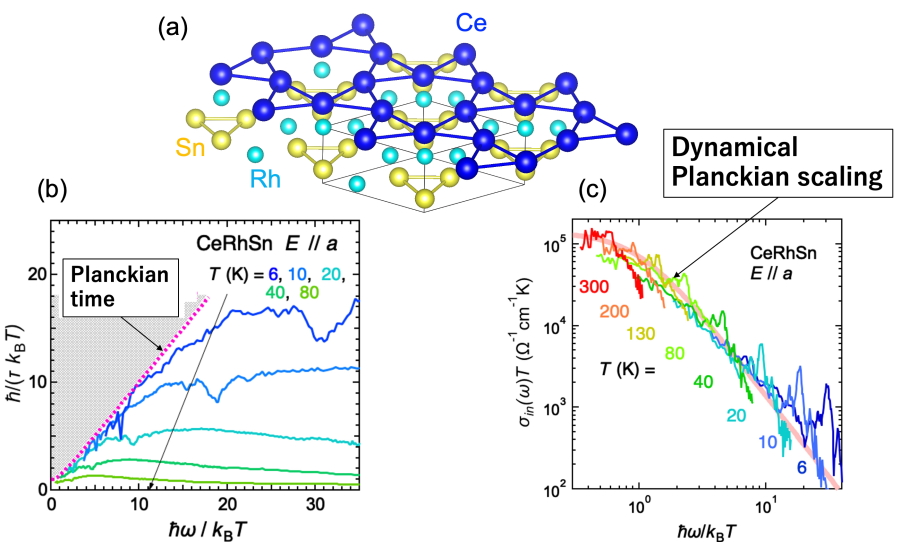Heavy fermions entangled: Quantum computing's new frontier?
Discovery of Planckian time limit opens doors to novel quantum technologies
| Journal | npj Quantum Mater. 10(1):85 (2025) |
|---|---|
| Title | Anisotropic non-Fermi liquid and dynamical Planckian scaling of a quasi-kagome Kondo lattice system |
| Laboratory | Photophysics Laboratory〈Prof. KIMURA Shin-ichi〉 |
A joint research team from Japan has observed "heavy fermions," electrons with dramatically enhanced mass, exhibiting quantum entanglement governed by the Planckian time – the fundamental unit of time in quantum mechanics. This discovery opens up exciting possibilities for harnessing this phenomenon in solid-state materials to develop a new type of quantum computer.
Heavy fermions arise when conduction electrons in a solid interact strongly with localized magnetic electrons, effectively increasing their mass. This phenomenon leads to unusual properties like unconventional superconductivity and is a central theme in condensed matter physics. Cerium-Rhodium-Tin (CeRhSn), the material studied in this research, belongs to a class of heavy fermion systems with a quasi-kagome lattice structure, known for its geometrical frustration effects.
Researchers investigated the electronic state of CeRhSn, known for exhibiting non-Fermi liquid behavior at relatively high temperatures. Precise measurements of CeRhSn's reflectance spectra revealed non-Fermi liquid behavior persisting up to near room temperature, with heavy electron lifetimes approaching the Planckian limit. The observed spectral behavior, describable by a single function, strongly indicates that heavy electrons in CeRhSn are quantum entangled.
Dr. Shin-ichi Kimura of The University of Osaka, who led the research, explains, “Our findings demonstrate that heavy fermions in this quantum critical state are indeed entangled, and this entanglement is controlled by the Planckian time. This direct observation is a significant step towards understanding the complex interplay between quantum entanglement and heavy fermion behavior.”
Quantum entanglement is a key resource for quantum computing, and the ability to control and manipulate it in solid-state materials like CeRhSn offers a potential pathway towards novel quantum computing architectures. The Planckian time limit observed in this study provides crucial information for designing such systems. Further research into these entangled states could revolutionize quantum information processing and unlock new possibilities in quantum technologies. This discovery not only advances our understanding of strongly correlated electron systems but also paves the way for potential applications in next-generation quantum technologies.
Abstract
At the quantum critical point of correlated materials, a non-Fermi liquid state appears where electron correlations continuously develop to very low tempera- tures. The relaxation time of the interacted electrons, namely quasiparticles, is scaled with the Planckian time, ℏ/kBT. However, there is a debate over whether heavy-fermion systems can obey the Planckian time. In the optical conductivity spectra, the Drude response will appear as the scaling of ℏω/kBT as the dynam- ical Planckian scaling (DPS). Here, we report the non-Fermi liquid behavior in the Drude response of a candidate for such materials, the quasi-kagome Kondo lattice CeRhSn. Even though the material shows a strong valence fluctuation, renormalized Drude responses observed at the photon energy below 100 meV are characterized by non-Fermi-liquid-like scattering rate 1/τ. The heavy carriers’ Drude response only for the Ce quasi-kagome plane obeyed DPS below 80 K, suggesting the anisotropic quantum criticality with the strong c-f hybridization.

Fig. 1
Image of heavy electrons with quantum entanglement on CeRhSn

Fig. 2
(a) Crystal structure of CeRhSn. (b) Inverse lifetime divided by the temperature and the Planckian time as a function of the photon energy divided by the temperature. (c) Dynamical Planckian scaling plot and a theoretical curve.
| Authors | Shin-ichi Kimura (1, 2, 3), Muhammad Frassetia Lubis (2), Hiroshi Watanabe (1, 2), Yasuyuki Shimura (4), Toshiro Takabatake (4)
|
|---|
